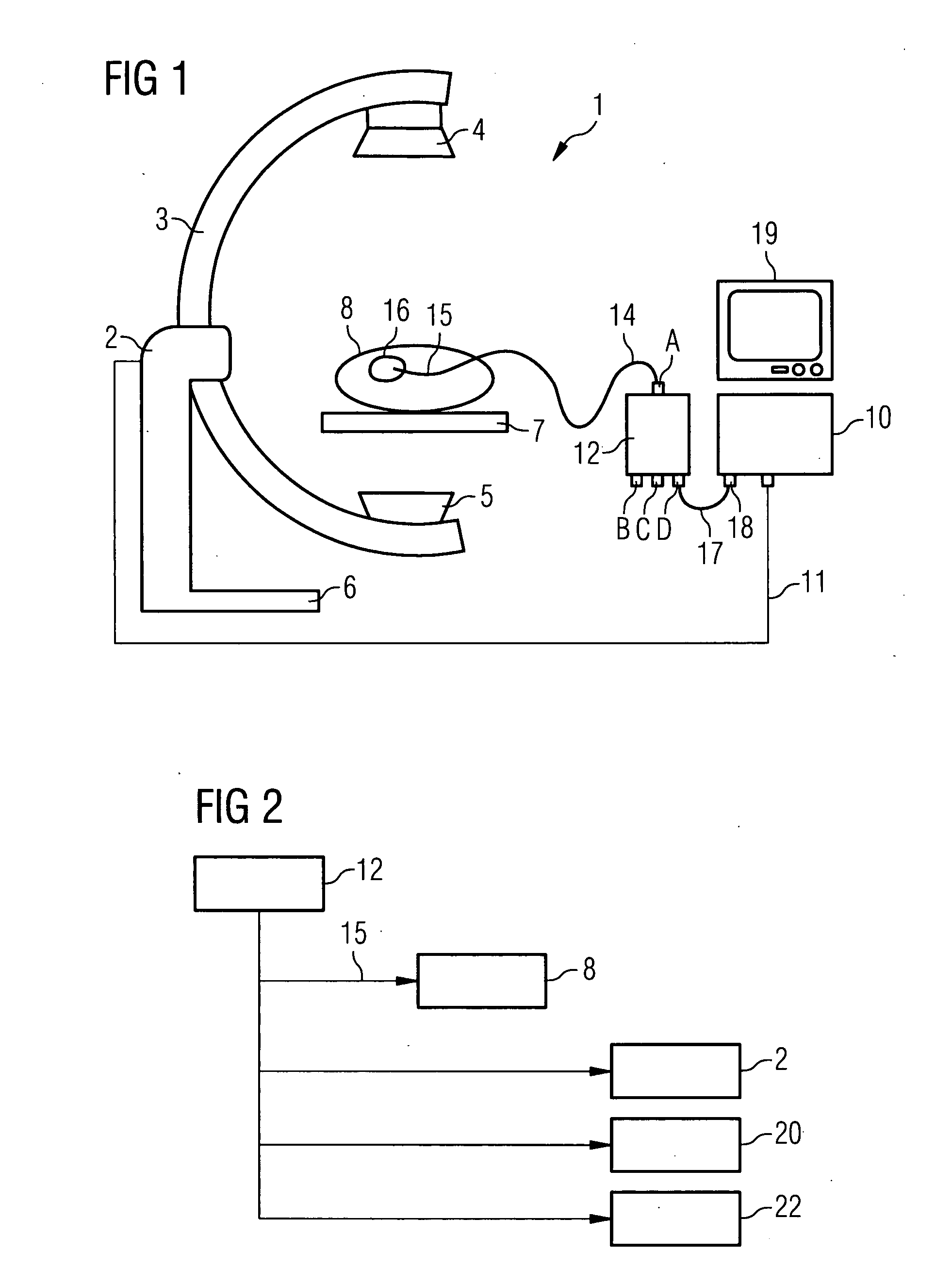Method and medical imaging system for acquisition of image data
a medical imaging and image data technology, applied in the field of medical imaging system for image data acquisition, can solve the problems of complicated situation, motion of the beating heart, and often significant imprecision
- Summary
- Abstract
- Description
- Claims
- Application Information
AI Technical Summary
Benefits of technology
Problems solved by technology
Method used
Image
Examples
Embodiment Construction
[0027]With reference to FIG. 1, an imaging system 1 is shown there which includes a C-arm x-ray device 2. This has a C-arm 3, attached to the ends of which are an x-ray source 4 and an x-ray detector 5 respectively. The C-arm 3 is held by a stand 6 and can be swiveled, especially rotated, around a patient table 7. A patient 8 is shown on the table who is to undergo a cardiological intervention. Intracardial electrodes 15 are hence inserted into the heart 16, and are connected via a cable 14 to an external heart pacemaker 12. This has outputs A, B, C and D, at which in each case the pacing signal is emitted. Output D is connected via a cable 17 to the input 18 of a control apparatus 10 of the C-arm x-ray device 2. The control unit 10 contains in particular a processor and data memory and is used to control the movements, image recording and reconstructions of the C-arm device 2. To this end it is connected to the C-arm device 2 via signal lines 11. The images are displayed for the op...
PUM
 Login to View More
Login to View More Abstract
Description
Claims
Application Information
 Login to View More
Login to View More - R&D
- Intellectual Property
- Life Sciences
- Materials
- Tech Scout
- Unparalleled Data Quality
- Higher Quality Content
- 60% Fewer Hallucinations
Browse by: Latest US Patents, China's latest patents, Technical Efficacy Thesaurus, Application Domain, Technology Topic, Popular Technical Reports.
© 2025 PatSnap. All rights reserved.Legal|Privacy policy|Modern Slavery Act Transparency Statement|Sitemap|About US| Contact US: help@patsnap.com


